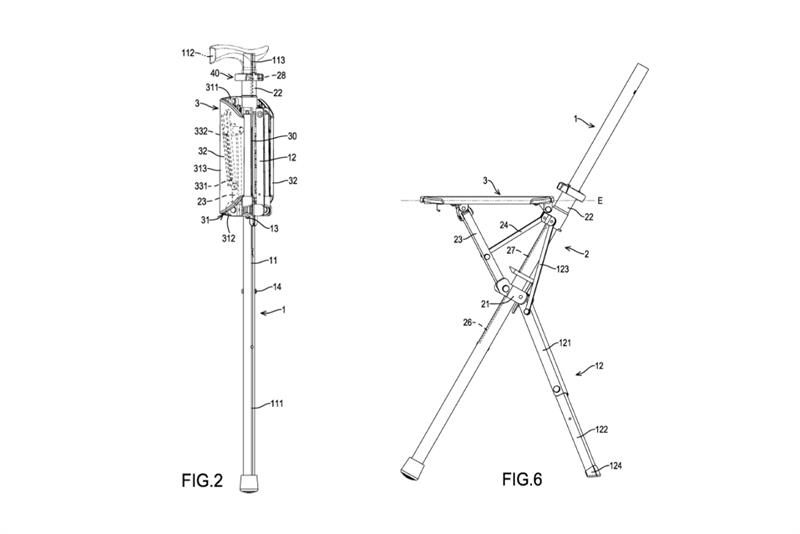The World Health Organisation has stated that between 2015 and 2050, it is likely that the proportion of the world's population that are over 60 years old will nearly double from 12% to 22%. This will bring with it a range of challenges to society as a whole, amongst them having the know-how and equipment to cater for increasing numbers of people living with impaired physical capabilities.
European patent 2865290, recently granted to a Taiwanese company, Step2Gold Co Ltd, features a walking stick that can be converted into a chair. The patent illustrates use of a mechanism ensuring that, when the seat is in its stowed position, it is compact and unlikely to get in the way of the user while they are using the walking stick to get around. The same mechanism also allows the user to convert the walking stick into a chair, so they can rest.
As shown in the images, the conversion mechanism (2) and seat unit (3) are located on a supporting unit (1). The conversion mechanism has a collar sleeve (22) and carrier (21), which are both mounted on a shank (11) of the support unit (1). The seat unit, which is designed to pivot, is connected to the collar sleeve, and support braces (23) and legs (12) are connected to the carrier. When the handle at the top end of the supporting unit is rotated, the seat unit pivots outwards and the support legs are released to create a chair.

For the patent owner, this innovation is a flagship product, and it has recently been branded as the Ta-Da Chair. As well as owning a further European patent, Step2Go also has patents for the product in the US, China, Taiwan, and Japan, as well as registered trade mark protection.
By investing in a robust, global portfolio of IP assets linked to its innovation and its brand, the company has made it difficult for other potential competitors to enter this rapidly-expanding market. The protection these assets provide also gives the company a strong commercial advantage and a good chance of securing a major market share.











